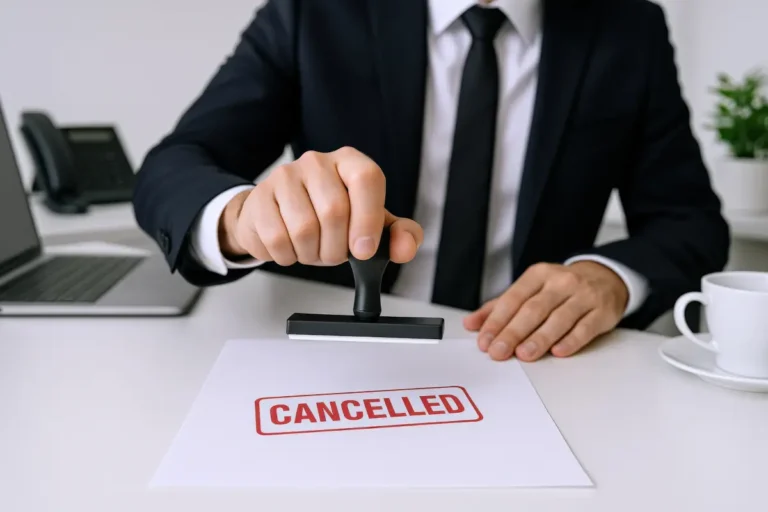One of the biggest challenges landlords and property managers face is dealing with high vacancy rates and prolonged turnover times. When a rental unit sits empty for too long, it leads to lost income, increased maintenance costs, and unnecessary stress. Understanding why vacancies happen, how to minimize turnover time, and implementing proactive solutions can significantly improve your rental property’s profitability.
Understanding High Vacancy Rates
Vacancy rates refer to the percentage of rental properties that are unoccupied at a given time. While some vacancies are inevitable due to tenant turnover, high vacancy rates often signal underlying problems that need to be addressed.
Common Causes of High Vacancy Rates:
- Overpriced Rent: If your rental rate is too high compared to similar properties in the area, potential tenants may look elsewhere.
- Poor Property Condition: Outdated or poorly maintained properties are less attractive to renters.
- Lack of Marketing Efforts: If your listing isn’t reaching the right audience, you’ll struggle to find tenants.
- Seasonal Trends: Certain times of the year see less rental activity. For example, winter months often experience lower demand.
- Negative Reviews or Reputation Issues: If your property has bad online reviews or tenants have had poor experiences, it can deter new renters.
- High Tenant Turnover: Frequent move-outs can make it harder to maintain occupancy.
Long Turnover Times: Why It Matters
Turnover time refers to the period between when a tenant moves out and a new one moves in. The longer this process takes, the more money a landlord loses. A prolonged turnover can mean:
- More mortgage payments without rental income.
- Increased maintenance and repair costs.
- Higher marketing expenses to attract new tenants.
Common Reasons for Long Turnover Times:
- Delays in Repairs or Maintenance: A unit that isn’t move-in ready can’t be rented out immediately.
- Inefficient Tenant Screening: Taking too long to screen applicants can delay the leasing process.
- Poor Marketing Strategy: If the property isn’t getting enough exposure, finding the right tenant takes longer.
- Lengthy Lease Negotiations: Delays in finalizing lease terms can slow down occupancy.
How to Reduce Vacancy Rates and Speed Up Turnover Time
1. Price Your Rental Competitively
Setting the right rental price is crucial. If your unit is sitting vacant for too long, compare it to similar properties in your area. Conduct a rental market analysis and adjust your price accordingly. A competitive price will attract more tenants and reduce vacancy periods.
2. Keep Your Property Well-Maintained
A well-kept property not only retains current tenants but also attracts new ones faster. Make sure to:
- Regularly inspect and maintain appliances, plumbing, and HVAC systems.
- Improve curb appeal with landscaping and exterior upgrades.
- Keep the interiors updated with fresh paint, modern fixtures, and clean flooring.
3. Market Your Property Effectively
An effective marketing strategy ensures that your listing reaches the right audience. Consider these approaches:
- Use high-quality photos and video tours to showcase your rental.
- List your property on multiple platforms, including Zillow, Apartments.com, Craigslist, and social media.
- Highlight key features and amenities that make your rental stand out.
- Offer move-in incentives, such as a rent discount for the first month, to attract tenants.
4. Streamline the Tenant Screening Process
Finding the right tenant quickly can significantly reduce turnover time. However, the process should not be rushed at the expense of thorough screening. Use these best practices:
- Set clear tenant criteria upfront (credit score, rental history, income verification, etc.).
- Use online application tools to speed up the process.
- Conduct background checks efficiently.
- Have a streamlined approval process to avoid unnecessary delays.
5. Improve Tenant Retention
Reducing turnover starts with keeping your current tenants happy. Some strategies to increase lease renewals include:
- Responsive Property Management: Quickly addressing tenant concerns builds trust and encourages long-term tenancy.
- Incentives for Lease Renewals: Consider offering small rent discounts or upgraded amenities for tenants who renew their lease.
- Regular Communication: Check in with tenants periodically to ensure they’re satisfied with their living conditions.
6. Plan for Quick Turnarounds
As soon as a tenant gives notice to vacate, start preparing for the next occupant. To speed up the process:
- Schedule repairs and cleaning services before the current tenant moves out.
- Have a pre-listing marketing plan ready so you can start advertising immediately.
- Offer virtual or self-guided tours to accommodate busy schedules.
7. Offer Flexible Lease Terms
If your property is frequently vacant, consider adjusting your lease options. Shorter lease terms, month-to-month agreements, or offering a furnished rental can appeal to a broader range of tenants.
The Cost of High Vacancy and Long Turnover
Vacant rental properties directly impact your bottom line. Consider these potential costs:
- Lost Rent: A unit sitting empty for two months at $2,000/month means $4,000 in lost income.
- Marketing Expenses: Listing fees, advertising costs, and time spent showing the unit add up.
- Utility and Maintenance Costs: While vacant, the landlord may still have to cover utilities and ongoing maintenance.
By actively managing vacancy rates and turnover times, landlords can significantly improve their rental property’s performance and profitability.
With the right strategies, you can minimize downtime and keep your rental property occupied with quality tenants. By pricing your property competitively, maintaining it well, marketing effectively, and streamlining the tenant screening process, you can reduce vacancy losses and ensure steady rental income.
At SJA Property Management, we specialize in helping landlords optimize their rental properties. Whether you need assistance with tenant placement, marketing, or full-service management, our experienced team is here to help.
Contact us today to learn more about how we can help you keep your rental occupied and profitable!
DISCLAIMER:
Whether you’re a landlord or a tenant, staying informed is essential for a smooth and successful rental experience in Seattle. We are not providing legal advice, and for specific legal questions or concerns, we recommend consulting an attorney or reaching out to local housing authorities for expert guidance.






